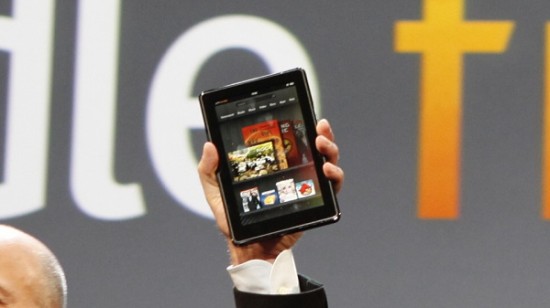3D smartphones, remember those? After a handful of attempts from various companies it seemed we were all in agreement that it wasn’t a good idea, but fresh rumours this week hint at Amazon building a glasses-free 3D phone.
The Wall Street Journal believes that Amazon has plans to expand its hardware portfolio this year, and they’re not talking about eReaders and tablets, either. The online retail giant is said to be working on two smartphones, one of which is a high-end model with a 3D screen that doesn’t require 3D glasses.
WSJ’s sources confirmed to them how the 3D part of the phone would work;
“Using retina-tracking technology, images on the smartphone would seem to float above the screen like a hologram and appear three-dimensional at all angles, they said. Users may be able to navigate through content using just their eyes, two of the people said.”
Rumours of an Amazon smartphone aren’t new of course, with reports going back to early last year. However, 3D is something new to the mix, and the technology said to be used sounds intriguing.
3D smartphones have happened before but weren’t all that successful. The HTC EVO 3D and the LG Optimus 3D were the two most well-known, with both never seeing a successor from either brand. These phones used stereoscopic 3D cameras and displays to allow the user to shoot 3D pictures and videos as well as view games, movies and the like in 3D without the need to wear glasses.
We found – as did many others – that with these phones you had to hold the phone at just the right angle to get the ‘sweet spot’ where the 3D effect worked right. It seems Amazon is aiming to alleviate this issue by using eye tracking to ensure the 3D effect works no matter what angle you’re looking at the phone from, which sounds promising.
Also noted by the same sources is a music-only streaming device. Little information has been given, although it’s thought the device will work similarly to an iPod Touch, integrating with Amazon’s MP3 and Cloud services to provide the content.
However, the sources noted that some, or all of these products, may not even make it to market due to manufacturing and performance problems.

